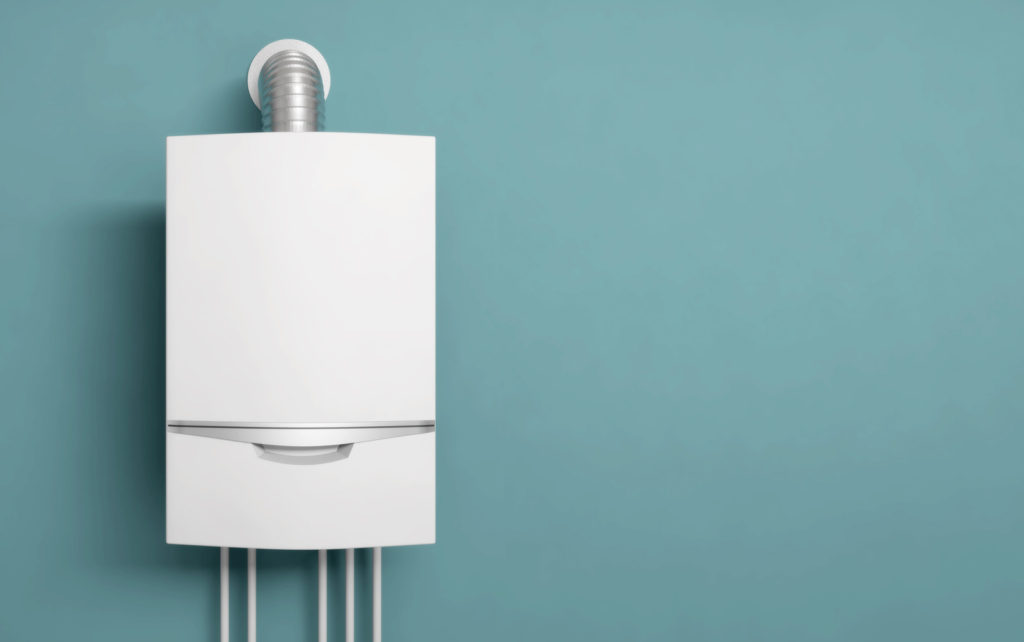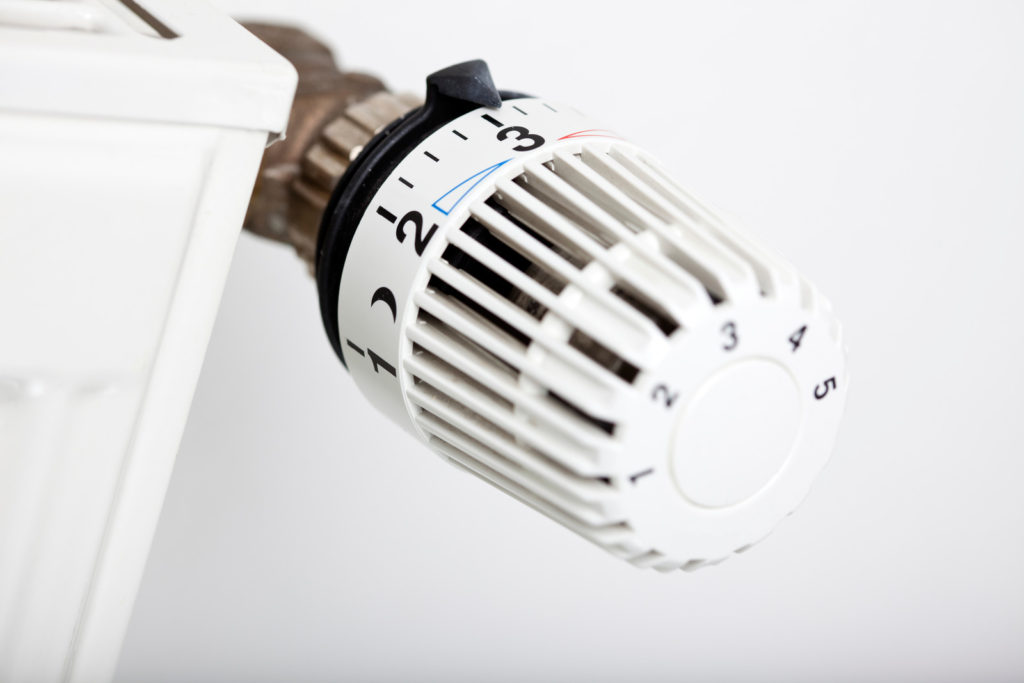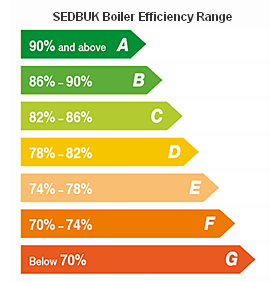The great thing about combi boilers is that they don’t have a water tank, so that’s one less thing taking up space and needed to heat. They take water directly from the mains and heat it up as needed so they can be more efficient to run, as long as you set them up and use them correctly.
Steps to combi boiler efficiency
- Don’t leave the heating on all day.
- Learn how the boiler controls work.
- Upgrade your thermostat.
- Don’t set the water temperature too high.
- Use Thermostatic Radiator Valves properly.
- Set the optimum temperature for a combi boiler.
- Have the boiler serviced annually.
- Find the best energy tariff.

How does a combi boiler work?
Gas combi boilers are the most common type in use today. They combine a water heater and a central heating boiler in one unit. Water passes over the heat exchanger heated by the burner. The hot water for the taps comes directly from the mains and is then pumped without being stored. Water for the radiators is kept inside a sealed pressurised system.
Instead of storing it in a cylinder or a tank, hot water is provided on demand when the hot tap is turned on. So they heat up the right amount of water as needed so you only pay for what you use.
How efficient are combi boilers?
When we talk about the efficiency of the boiler, we are talking about fuel efficiency. So that the amount of energy you input into the boiler i.e. natural gas, versus the amount of energy you get out of the boiler as useful heat.
Combi boilers are highly efficient and recent rules mean they must be at least 92% efficient, meaning they use 92% of the heat generated by fuel gas. This results in keeping your energy bills down. Boilers can never be 100% efficient as there’s always some heat escaping through the flue as products of combustion.
What is the optimum temperature to set a combi boiler?
Combi boilers are economical to run, as long as you set them up the right way. When it’s cold outside, the radiator temperatures need to be higher due to the extra heat loss from houses in colder weather.
Set the central heating temperature to around 75⁰C on the boiler, this is the optimal temperature. This is important in winter if you have a condensing combi boiler. In the summer, you can reduce this temperature by about 10⁰C.
A condensing combi boiler makes use of latent heat in the return pipe of a heating system. The boiler will not go into ‘condense mode’ if the return temperature (usually 20⁰C below heating temperature) is above 55⁰C and so won’t be as efficient as it can be.
How To Use a Combi Boiler Efficiently
If you’re looking to improve the efficiency of your combi boiler, here are some tips to help you do that.
1. Combi boiler temperature settings
Set the optimum temperature for a combi boiler. Modern combi boilers allow you to have better control over the output temperature going to the radiators. The optimum temperature for them is 75⁰C and for hot water it is between 55⁰C and 60⁰C, which ensures harmful bacteria is killed before reaching the taps. Setting temperatures higher than these means you’re not using the boiler efficiently.
Radiators are often designed to have a temperature difference of 50⁰C between the required room temperature and the flow temperature in the radiator. So if you want it to be 20⁰C in your bedroom, for example, you will want to set the flow temperature in the radiator to 70⁰C. The idea is to set it at just the right amount to heat the room.

2. Don’t leave the heating on all day
A combi boiler running all the time is inefficient if you leave the heating on all day, albeit to a lower temperature, where the boiler is constantly having to work and so use more gas. Because people can be comfortable within a range of temperatures, you should only turn the heating on when you need it.
3. Understand combi boiler controls
A combi boiler can give you separate controls of the water at the hot tap and at the radiators. Heating and hot water controls make a big difference to your comfort and energy use in your home, and the two popular ways to control these are a room thermostat and a boiler programmer.
The room thermostat monitors the temperature inside your home and can be set to how warm you like it to be. They can be wired, wireless or connected to your smart phone.
It’s important to place room thermostats in the correct location i.e. somewhere that isn’t draughty or above a radiator. Hallways and landings are good positions as they give a good indication of the temperature in the rest of your home.
The other control is to use a timer that lets you set your central heating system to switch on and off at certain times of the day, and these are repeated every day. A boiler programmer gives you more flexibility to switch the heating on at different times on different days to suit your lifestyle.
Once you have set the controls on the boiler to a comfortable level it is best to leave them and control the heating using the thermostats on the wall and on the radiators. Adjusting the programmer to your daily routine and selecting the best place for a room thermostat are both good ways to use your combi boiler more efficiently.
4. Upgrade your thermostat
If you have a dial room thermostat, it is likely to have a bi-metallic strip within it to sense the temperature and these are very inaccurate. They don’t adjust nearly as fast as they should, unlike a digital room thermostat. Consider upgrading to one of these if cost is an issue.
If your boiler is out of the way, like in a garage or in the loft, its programmer may be hard to access and adjust regularly. You can upgrade to a programmable room thermostat which lets you set the different times your heating comes on from the thermostat and also set the temperature too, from a convenient place.
Wireless thermostats give you more control from anywhere so can adjust the heating operation and times if your daily routine changes. They help in becoming more energy-efficient and reduce wasted energy. Some are also able to learn how you use the heating system and adjust the settings automatically.
5. Don’t set the water temperature too high
Adjusting the hot water temperature so it isn’t higher than it should be will save you on energy bills. The aim is to set a temperature where you can run a bath with hot water and you don’t have to add cold water to it to get the right temperature. Combi boilers have easily adjustable controls for this.
6. Use TRV’s properly
You can adjust the temperature of individual radiators by turning the Thermostatic Radiator Valves (TRV) that is found at the bottom of your radiators. Because they give you control over each radiator, you can turn down a particular radiator in a room that isn’t used much and save energy.
It’s not a good idea to switch a radiator off completely, even in an unused room because this could lead to mould and damp.

7. Get the boiler serviced regularly by someone familiar with it
There are lots of combi boiler brands having various models both large and small. It’s important to have your boiler serviced regularly and by someone that is familiar with that brand and model and works on them often.
Many gas engineers specialise with particular brands and can get the best out of the boiler to make it more efficient.
We recommend Hometree services to look after your home heating needs. Click here to see why
8. Find the best energy tariff
With the vast majority of combi boilers using mains gas, it makes sense to find an energy supplier that has the cheapest prices for gas. Using comparison sites, you could save hundreds of pounds by switching energy tariffs. Just as using your boiler efficiently can save you money, so can the cheapest gas prices.

What about condensing combi boilers?
Modern condensing boilers have a requirement as per current building regulations (Part L), to be at least 88% efficient. But it doesn’t mean that once they are installed they actually are that efficient.
A study by the department of energy and climate change found that condensing boilers were around 83% efficient after they had been installed.
So it is important that you make improvements such as those mentioned above as best as you can.
